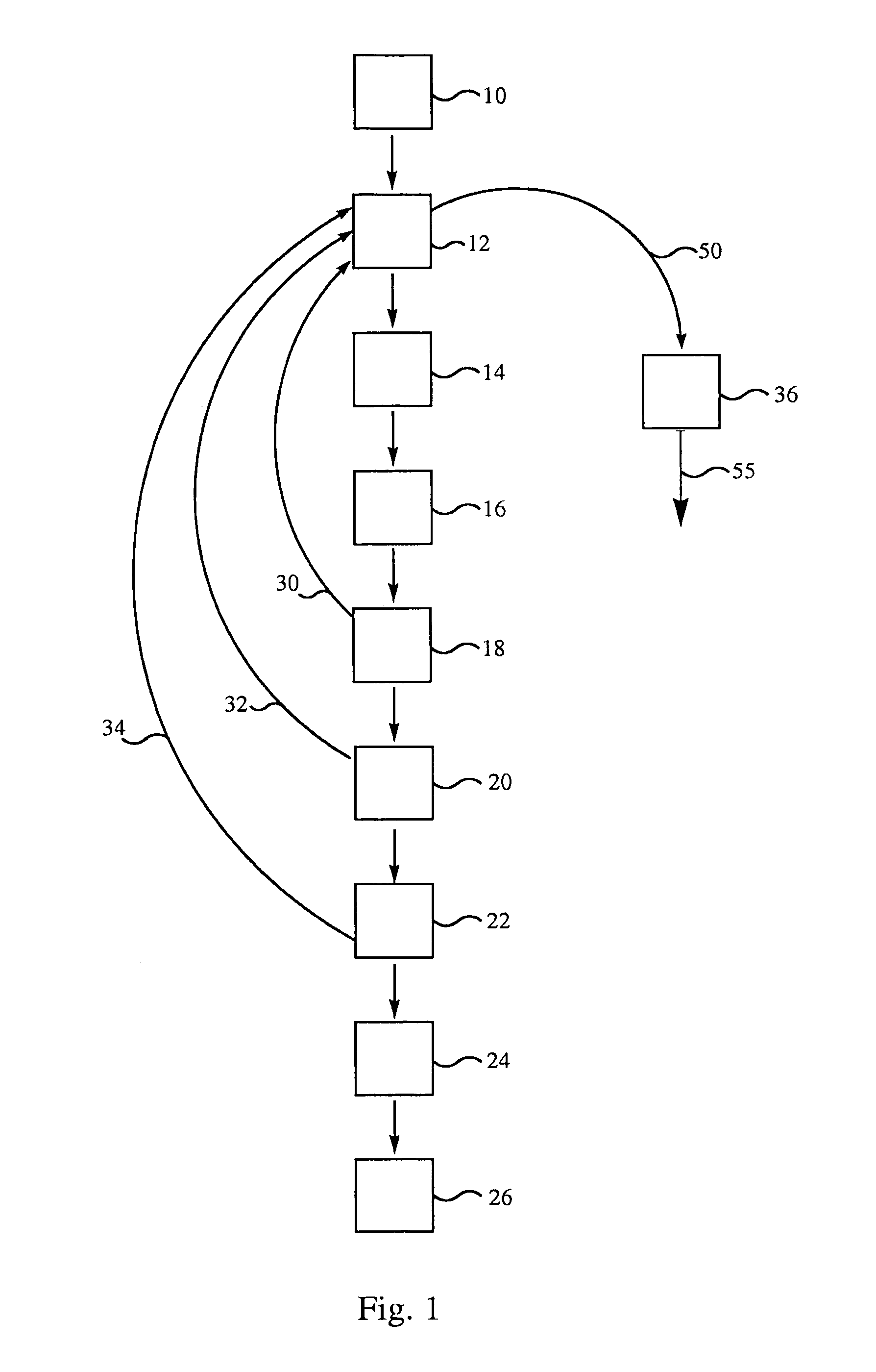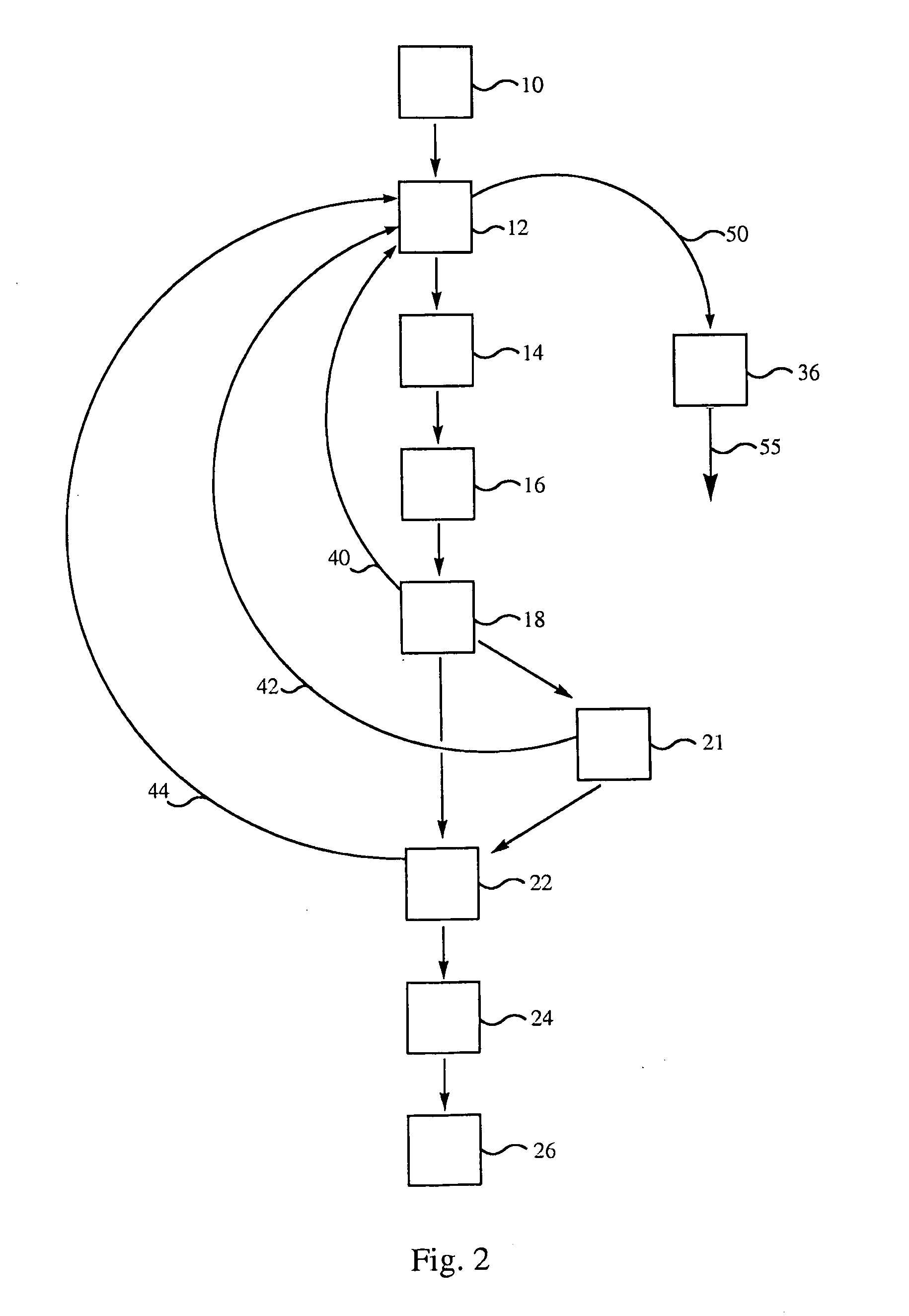Microbilogical and environmental control in poultry processing
a technology of microorganisms and environmental control, applied in poultry processing, milk preservation, food preparation, etc., can solve the problems of inhibiting the activity of such microorganisms, and achieve the effect of reducing water consumption and discharge, and reducing the toxicity of biocidally active residues
- Summary
- Abstract
- Description
- Claims
- Application Information
AI Technical Summary
Benefits of technology
Problems solved by technology
Method used
Image
Examples
Embodiment Construction
[0021]In typical poultry processing operations the sequence of operations comprises killing the birds (usually after stunning them), scalding the feathered poultry carcasses in a scalder or scalding tank, defeathering the carcasses (usually in a picker device), eviscerating the carcasses, subjecting eviscerated carcasses to inside-outside washing, subjecting eviscerated carcasses to continuous online processing or to certain offline reprocessing of carcasses, optionally subjecting the carcasses to prechill spray (typically in a spray cabinet), chilling the carcasses in a chill tank filled with a cold aqueous medium, and optionally subjecting the carcasses to a post-chill dip or spray. Other operations such as cold storage, etc., are also frequently used. In many of these operations, water is used either for washing or for serving as a contact medium for chilling and / or for applying an aqueous microbiocidal solution to the bird and / or carcass. Ordinarily, the effluent water used in a...
PUM
 Login to View More
Login to View More Abstract
Description
Claims
Application Information
 Login to View More
Login to View More - R&D
- Intellectual Property
- Life Sciences
- Materials
- Tech Scout
- Unparalleled Data Quality
- Higher Quality Content
- 60% Fewer Hallucinations
Browse by: Latest US Patents, China's latest patents, Technical Efficacy Thesaurus, Application Domain, Technology Topic, Popular Technical Reports.
© 2025 PatSnap. All rights reserved.Legal|Privacy policy|Modern Slavery Act Transparency Statement|Sitemap|About US| Contact US: help@patsnap.com



